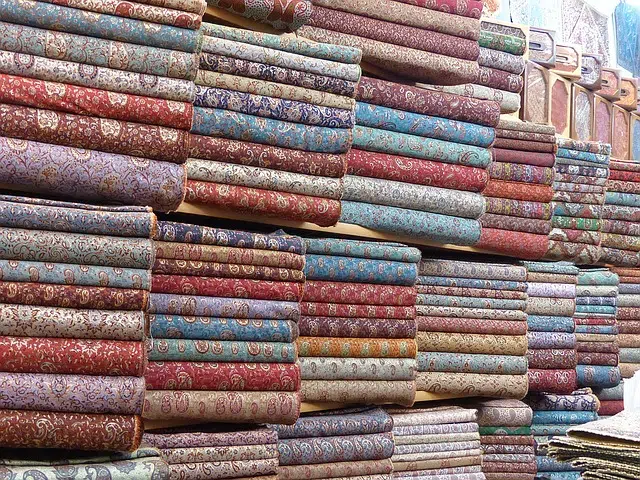
The brocade technique, with its unmistakable fabric ornaments, is very old.
The concept of brocade can refer to different types of fabrics or textiles . The term comes from the Italian word broccato , which derives from brocco (translatable as "dry branch" or "thorn" ).
Luxury fabric
Brocade is a silk fabric made up of different wefts that can be used to make luxury garments. It is common for the wefts that are superimposed on the base weft to be woven with silver or gold thread .
A brocade is therefore a silk fabric that is interwoven with silver or gold . These metal threads are used to make various designs and figures.
History of brocade
The origins of brocades are found in Chinese territory . From the Asian giant they spread to Byzantium and Persia , finally reaching the European continent through Italy .
Because of the complexity of its preparation, brocade was usually used exclusively by the clergy, nobles and members of royalty . In the 17th century , due to a simplification of the fabrics and their lowering in price, brocades spread to other social classes and groups.
This process continued into the following century, although it was only with the arrival of the Jacquard loom that a significant change took place. Its creator, Joseph Marie Jacquard , introduced it in 1801. Its mechanism was based on the use of punched cards to capture the patterns on the fabric. One of its advantages was its ease of use, since no artistic skill was necessary. As a curious fact, all the antecedents of this loom were also French.
Current applications
Today, brocade is used to make tablecloths , curtains , religious garments and saris . One type of imitation brocade is known as brocatel : it resembles brocade with its raised embroidery, although it uses cheaper fibres (such as cotton and linen ).
Other uses of brocade mentioned by the Royal Spanish Academy ( RAE ) in its dictionary refer to a strong silk fabric that has drawings of a different color than the background and to a guadamecí (a leather decorated with reliefs or drawings) in silver or gold.
Applied brocade
Brocade is an ornamental technique that comes from the Flemish Renaissance and was used between the mid-15th and 16th centuries. It consists of emulating the appearance of fabrics for the decoration of carvings or stone or wood tablets. A clear example of this technique can be found in the church of Santa María de Galdácano , in the Basque Country, particularly in the details of the Virgin Mary's clothing.
To achieve this effect, sheets of a material called gold leaf must be placed on tin sheets, using stencils filled with wax and engraved on rigid supports. The ornamentation is then carried out with lacquer or paint. Various works of applied brocade are also found in Navarre.

Religious temples acquire greater mysticism thanks to gold brocade
Gold leaf
As mentioned in the previous paragraph, gold leaf is a fundamental element for the production of applied brocade. It is a thin sheet of gold that is made by hand, using a process called beating .
Throughout history, gold leaf has been used in combination with the brocade technique to decorate many works of art made from different materials. Although gilding is not currently considered a good option to enhance a design, several centuries ago it was used to enhance the appearance of icons, sculptures, furniture, altarpieces, walls and columns, among other elements.
